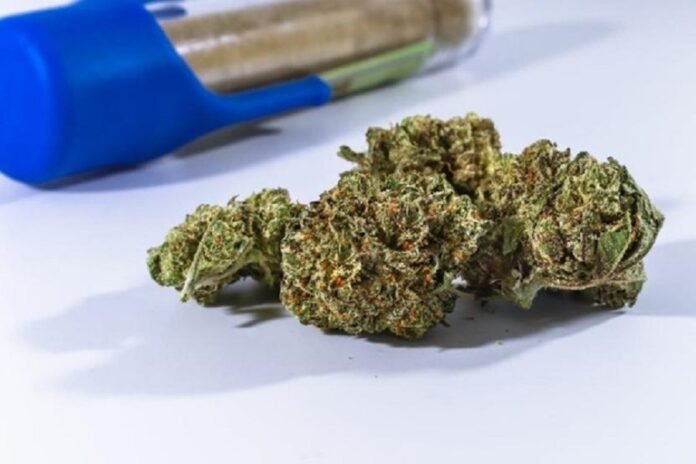There are 700 to 800 strains of cannabis out there, and while you don’t need to know about all of them, you probably know about two strains already, Sativa and Indica. They are two primary subspecies of the plant and are definitely among the most popular strains today.
As the global conversation around cannabis continues to evolve, it’s crucial to understand the differences between Sativa and Indica, which can greatly influence your cannabis experience. Whether you’re a seasoned connoisseur or a curious newcomer, our guide is going to help you make informed choices when picking the right strain for your needs and preferences. So let’s dive right into it; here’s Sativa Vs. Indica- know your type of THC!
Understanding Cannabinoids
Cannabis plants contain thousands of chemical compounds called cannabinoids. They occur naturally in the plant and are influential in bringing out the different effects, as well as the positive and negative outcomes of cannabis.
The two main cannabinoids are THC and CBD.
- THC: This stands for tetrahydrocannabinol and also delta-9. This is the main psychoactive chemical found in marijuana.
- CBD: CBD stands for cannabidiol. CBD is not psychoactive and has several medicinal benefits, CBD is also sold as oil and lotions.
Differences Between Sativa Vs. Indica
We’re going to categorize the differences based on factors such as physical appearance, growing conditions, THC and CBD levels, etc. Let’s get started,
1. Plant Appearance
- Sativa: Sativa plants typically have thinner leaves and a more open, airy growth structure. They can reach heights of up to 20 feet when grown outdoors.
- Indica: Indica plants are shorter and bushier, with broader leaves and a compact structure. They usually reach heights between 3 and 6 feet.
2. Growing Conditions
- Sativa: Sativa strains thrive in warm, tropical climates with longer growing seasons. They need more space to grow and tend to have longer flowering times.
- Indica: Indica strains are better suited to colder climates and have shorter flowering periods. They are more adaptable to indoor cultivation.
3. Effects on Mood and Energy
- Sativa: Sativa strains are known for their uplifting and energizing effects. They often induce a cerebral and creative high, making them great to use during the daytime. This strain has been shown to help ease the effects of depression.
- Indica: Indica strains are associated with a very relaxing effect and sometimes sedating effect. They provide a body-centric high that is better to use at nighttime or for relaxation after a long day of work. This strain is known to help stimulate appetite and relieve pain.
Whether it’s for relaxing or energizing, 50 mg delta 9 gummies or quality THC tinctures are perfect for giving you the right amount of hit, depending on what you consume them for.
4. THC and CBD Content
- Sativa: Sativa strains tend to have a higher THC to CBD ratio. This makes them more psychoactive, giving you a stronger and more euphoric effect.
- Indica: Indica strains have a more balanced THC-to-CBD ratio or higher CBD content. This gives a more balanced and mellow high.
5. Aromas and Flavors
- Sativa: Sativa strains often have fruity, citrusy, or earthy aromas and flavors.
- Indica: Indica strains may have sweeter, skunkier, or spicier aromas and flavors.
6. Medical Uses
- Sativa: Sativa strains are used for managing conditions like depression, fatigue, and mood disorders due to their uplifting effects.
- Indica: Indica strains are favored for pain-relieving effects, insomnia, anxiety, and muscle relaxation due to their calming properties.
7. Commonly Found
- Sativa: Sativa strains are native to regions near the equator, such as parts of Africa, Southeast Asia, and Central and South America.
- Indica: Indica strains have their origins in mountainous regions of Asia, including Afghanistan, Pakistan, and India.
Different Types of THC Levels
THC, or delta 9, is the primary psychoactive compound found in cannabis. While THC itself is a single compound, there are different types or forms of THC, primarily due to variations in its molecular structure and how it interacts with receptors in the brain and body.
Here are some notable types of THC,
- Delta-8 THC: This type is a less common form of THC that is found in trace amounts in the cannabis plant. It’s chemically similar to delta-9 THC but has a different arrangement of atoms. Delta-8 THC is known for its mild psychoactive effects and is sometimes used for its potential therapeutic effects.
- THCA: THCA is the non-psychoactive precursor to the delta-9-THC found in raw cannabis plants. THCA is primarily valued for its anti-inflammatory and neuroprotective properties.
- THCV: THCV is a variant of THC with a slightly different chemical structure. It is known for its potential appetite-suppressing effects and may have therapeutic applications in weight management. THCV is found in some strains of cannabis, especially those grown in Africa.
Hybrids
Hybrid cannabis strains are made from crossbreeding Sativa and Indica plants to create varieties that combine the qualities of both subspecies. These exhibit a wide range of effects, flavors, and growth traits, depending on the specific genetics and breeding techniques used.
Check out some common types of Sativa-Indica hybrid strains and their characteristics.
- Sativa-Dominant Hybrids: As the name suggests, these strains have a higher percentage of Sativa genetics, giving consumers uplifting and energizing effects.
- Indica-Dominant Hybrids: These lean more toward the Indica side, offering relaxation, pain relief, and sedation.
- 50/50 Hybrids: These are, as you probably guessed it, balanced hybrids. They have equal parts of both Sativa and Indica properties and provide both Sativa’s uplifting qualities and Indica’s relaxation.
- CBD/THC Hybrids: Some hybrids are bred to have balanced or high CBD content, making them less psychoactive and more suitable for medical use. These strains offer a combination of pain relief, anxiety reduction, and other therapeutic benefits.
- Terpene-Drive Hybrids: Breeders also focus on manipulating terpene profiles. Terpenes are naturally occurring aromatic compounds that form the scent and fragrance of many plants, including cannabis. In cannabis plants, terpenes influence and control the effects depending on the specific types of the plant.
These terpene hybrids have a mix of Sativa and Indica genetics but prioritize unique terpene profiles for distinct sensory experiences.
- Fast-Flowering Hybrids: Some hybrids are bred for their rapid flowering times, making them suitable for short growing seasons or indoor cultivation. These strains often combine the best characteristics of Sativa and Indica for quick and productive growth.
How To Choose The Right Strain For You
Choosing the right strain isn’t a one-and-done thing. You have to consider various factors, like personal preferences, goals, and medical needs (if any). The key is to start low, go slow, and pay attention to how different strains affect you until you find the right one that suits what you want and need.
Now let us help you guide you in that process,
- Ask The Questions: Ask yourself why you want to use cannabis. Is it for recreational enjoyment, medical relief, relaxation or to fire up your creativity? Answering these questions will help you land on your perfect strain.
- Consider THC and CBD Content: If you want a more mellow or non-intoxicating experience, go for strains with higher CBD content. If you want a more intense psychoactive experience, you want strains with higher THC content.
- Understand The Different Strains and Hybrids: We’ve explained in depth what the different strains and hybrids are in this guide. Sativa strains are energizing, while Indica helps relax and sedate. Hybrids combine the effects of both strains.
- Do Your Research: Explore videos, articles, research studies, databases, reviews, and tutorials. The internet has all the strain info you’ll ever need!
- Consider Delivery Method: How you consume cannabis (smoking, vaping, edibles, etc.) can affect the experience.
- Legalities: Make sure you’re obtaining cannabis legally from a reputable source that follows local laws and regulations.
- Be Mindful of Potential Side Effects: Understand that cannabis can have different side effects, such as dry mouth, red eyes, increased heart rate, and impaired cognition and coordination.
- Consult A Medical Professional: If you have specific medical concerns or are taking medications, consult your doctor or a medical professional before using cannabis for medicinal purposes.
Conclusion
And there you have it! We hope this guide helped you learn all about the different strains of Sativa and Indica, their differences, uses, and effects! We also sincerely hope we can help you settle on the right type of strain that caters to your wants and needs, whether they’re medical or recreational.
Remember to always consult a professional and do extensive research before consuming cannabis in any form. Keep in mind that individual responses to cannabis will be different, and what worked for one person may not work for another.
FAQs
1. Which Strain Effects Last Longer, Sativa or Indica?
Ans: Thanks to their higher CBD content, Indica strains are far more potent than Sativa. Indica does take a while to kick in and settle, but it will definitely give you a longer-lasting high.
Sativa’s effects are felt sooner, and its high is not as long-lasting.



































































